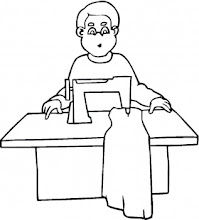It's not too heavy (the 45 nearly killed me walking up a hill to the sewing machine repair shop)...
Has a nice strong practical carry case...
It's well made and solid...
It produces a very neat stitch (a post I read said "The Japanese Frister's of the 1980's are still held as some of the finest sewing machines ever produced. The Cub, 500 and the 900 series still produce unbeatable quality when sewing well.")
Never seems to jam...
Copes with thick layers of denim...
Has a four step button hole feature...
It's got some nice stretch and decorative features as well as a good feature for ensuring seams don't unravel (with the 45, I would just uses a zig-zag stitch for this)
What isn't so good:
The foot pedal makes the engine hum before starting, like it's not sending enough juice for the motor to turn it's therefore not as easy to control, however, this could be due to a faulty foot pedal.
Is not as solidly built as the 45...
Has a plastic tension dial...
The motor belt is toothed and could strip.
The motor and other parts of machine are hidden away
Some of the oiling points shown in the manual don't look the same as my machine or you can't even identify them (and yes I have the right manual).
The threading took a while to figure out and follow on the machine, not as clear and easy as the 45.
I love the free-arm (patching jeans on a the 45 which is flatbed was almost impossible)











